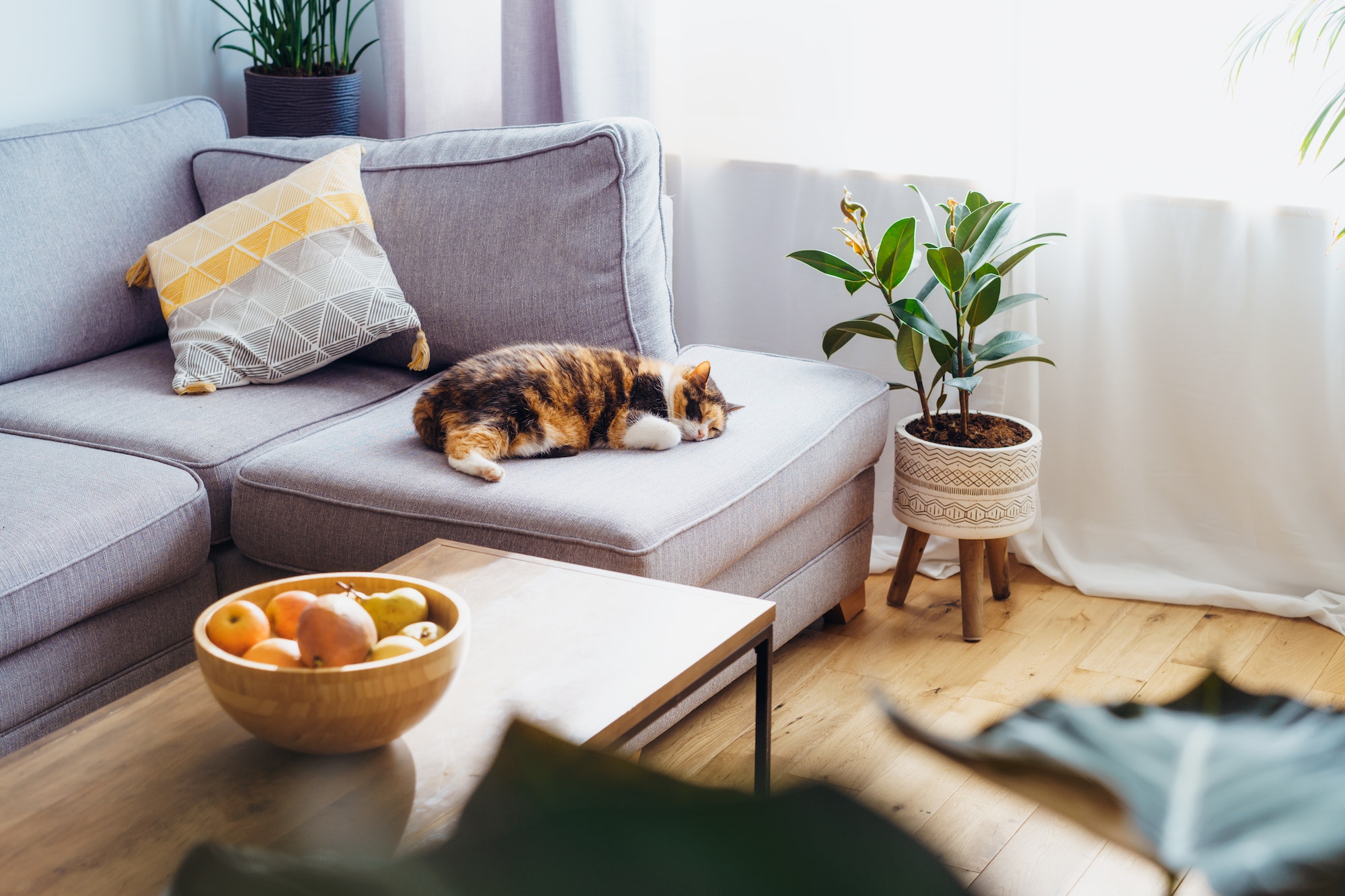Fleas are a prevalent issue for pet owners worldwide, causing discomfort and various health problems for our beloved furry friends. These tiny, blood-sucking parasites can invade our homes, infest our pets, and even cause issues for humans. Health concerns related to flea infestations range from mild skin irritations and itching to more severe conditions, such as flea allergy dermatitis in pets and transmission of diseases like murine typhus in humans. It’s crucial to address and eliminate flea infestations quickly, not only for our pets’ well-being but also for our own health and comfort.
In this article, we will provide valuable information and effective methods on how to get rid of fleas in the house fast, treat your pets with care, and prevent future infestations. By following the comprehensive advice and best practices outlined here, you can create a comfortable, flea-free environment for both you and your pets to enjoy.
How to Get Rid of Fleas in the House Fast
Table of Contents
Step 1: Identifying the Flea Infestation: Key Factors to Consider
Properly identifying a flea infestation is crucial in order to effectively deal with the problem. Pay attention to these important factors:
1. Behavior of Pets
One of the first signs of a flea infestation is a change in your pet’s behavior. Watch out for:
- Excessive scratching, licking, or biting at their skin
- Unusual restlessness or agitation
- Hair loss in specific areas due to constant scratching
2. Visible Fleas
Fleas are small, wingless insects that can sometimes be seen crawling on your pet’s skin or fur. They are usually reddish-brown and move quickly. Keep an eye out for:
- Fleas on your pets or around the house
- Flea eggs, which are tiny, white, and oval-shaped
3. Flea Dirt
Flea dirt is essentially flea feces, and it looks like small black specks. Check for the presence of flea dirt:
- On your pet’s skin or fur
- On pet bedding and other resting areas
- On carpets, rugs, and furniture
4. Flea Bites on Humans
Fleas can also bite humans, leaving small, red, itchy bumps on the skin. These bites are typically found:
- Around the ankles and lower legs
- In clusters or lines
- With a red “halo” around the bite center
5. Jumping Insects
Fleas are known for their incredible jumping ability. If you notice small insects jumping around your home, it’s a strong indication of a flea infestation.
By carefully considering these factors, you can accurately identify a flea infestation and take the necessary steps to eliminate the problem.
Step 2: Vacuum Thoroughly
Vacuuming is essential for removing fleas, their eggs, and larvae. Focus on these areas:
- Carpets and rugs
- Upholstered furniture
- Pet bedding
- Baseboards and corners
- Hardwood and tile floors
- Cracks and crevices
When choosing a vacuum for effective flea control, consider these essential features:
1. Strong Suction Power
A vacuum with strong suction power is vital for removing fleas, eggs, and larvae from various surfaces.
2. HEPA Filtration
High-Efficiency Particulate Air (HEPA) filtration helps capture allergens and fine particles, including flea eggs and larvae, preventing them from re-entering the air.
3. Crevice Tool Attachment
A crevice tool attachment allows you to reach and clean tight spaces, corners, and edges where fleas may hide.
4. Upholstery Tool Attachment
An upholstery tool attachment is designed to remove fleas, eggs, and larvae from upholstered furniture, curtains, and pet bedding.
5. Brush Roll
A vacuum with a brush roll can agitate and lift fleas, eggs, and larvae from carpets and rugs, making it easier for the vacuum to remove them.
6. Adjustable Height Settings
Vacuums with adjustable height settings allow you to optimize cleaning performance on different floor types, such as carpets, rugs, hardwood, and tile.
7. Easy-to-Empty Dust Cup or Bag
An easy-to-empty dust cup or bag ensures that you can dispose of the collected fleas, eggs, and larvae outside the house without risking reinfestation.
While not all of these features are absolutely mandatory, they significantly improve the vacuum’s effectiveness in controlling and eliminating fleas. Look for a vacuum with as many of these features as possible to maximize your chances of success.
Step 3: Wash Bedding and Fabrics
Properly washing bedding and fabrics is crucial in eliminating fleas and their eggs. Follow these steps and use the appropriate tools to ensure effective flea control:
1. Gather Infested Items
Collect all items that may be infested with fleas, such as:
- Pet bedding
- Throw rugs
- Blankets
- Curtains
- Cushion covers
- Stuffed toys
2. Use Plastic Bags
Place the infested items in large plastic bags before transporting them to the laundry room. This prevents fleas from spreading throughout the house.
3. Hot Water Wash
Wash the infested items using the highest heat setting recommended by the manufacturer. Hot water (at least 130°F or 54°C) is essential for killing fleas, eggs, and larvae.
4. Laundry Detergent
Use a high-quality laundry detergent to ensure thorough cleaning of the infested items.
5. High Heat Dry
Dry the washed items on the highest heat setting recommended by the manufacturer. The heat from the dryer will help eliminate any remaining fleas, eggs, and larvae.
6. Inspect Items
After washing and drying, inspect the items to ensure that no fleas, eggs, or larvae remain. If necessary, repeat the washing and drying process.
7. Clean the Laundry Room
After washing infested items, it’s essential to clean the laundry room to prevent reinfestation. Vacuum the floor, and wipe down the surfaces, including the inside of the washing machine and dryer.
By following these steps and using the appropriate tools, you can effectively eliminate fleas from bedding and fabrics, helping to regain control over your living space.
Step 4: Use Flea Treatment Products
There is a wide range of flea treatment products available, each with its own set of requirements, regulations, safety considerations, and prices. Here’s a list of some popular options:
1. Flea Sprays
- Requirements: Suitable for indoor and outdoor use; apply directly to infested areas
- Regulations: Follow EPA guidelines and product instructions for safe use
- Safety: Keep away from children and pets; ensure proper ventilation during application
- Services: DIY or professional pest control services
- Prices: $10 – $50, depending on brand and size
2. Flea Foggers (or Bombs)
- Requirements: Cover or remove all food, dishes, and personal items; vacate the premises during treatment
- Regulations: Follow EPA guidelines and product instructions for safe use
- Safety: Keep away from children and pets; ensure proper ventilation after treatment
- Services: DIY or professional pest control services
- Prices: $10 – $30 per fogger, depending on brand and size
3. Insect Growth Regulators (IGRs)
- Requirements: Apply directly to infested areas or mix with other flea control products
- Regulations: Follow EPA guidelines and product instructions for safe use
- Safety: Keep away from children and pets; use only as directed
- Services: DIY or professional pest control services
- Prices: $20 – $60, depending on brand and size
4. Flea Traps
- Requirements: Place in areas with high flea activity, such as near pet bedding or resting spots
- Regulations: Follow product instructions for safe use
- Safety: Generally safe for use around children and pets
- Services: DIY
- Prices: $10 – $30, depending on brand and quantity
5. Flea Powders
- Requirements: Apply to carpets, upholstery, and pet bedding; vacuum after the specified time
- Regulations: Follow EPA guidelines and product instructions for safe use
- Safety: Keep away from children and pets; ensure proper ventilation during application
- Services: DIY or professional pest control services
- Prices: $10 – $40, depending on brand and size
When using flea treatment products, always read and follow the instructions carefully to ensure their safe and effective use. If you’re unsure about handling these products yourself or have a severe infestation, consider hiring a professional pest control service. The cost of professional services can range from $100 to $300 or more, depending on the extent of the infestation and the treatments required.
Step 5: Treat Your Pets
To effectively treat your pets for fleas, follow these best practices and use the appropriate tools and methods:
1. Consult Your Veterinarian
Always consult your veterinarian before starting any flea treatment for your pets. They can provide guidance on the most suitable and safe products for your pet’s specific needs.
2. Flea Shampoos
- Suitable for dogs and cats
- Follow the product instructions and veterinarian’s recommendations
- Gently massage the shampoo into your pet’s fur, avoiding the eyes and ears
- Rinse thoroughly with warm water
3. Topical Flea Treatments
- Available for dogs and cats
- Apply as directed by the product instructions and veterinarian’s recommendations
- Ensure the treatment is applied directly to the skin, usually between the shoulder blades or at the base of the neck
- Allow the treatment to dry completely before petting or grooming
4. Oral Flea Medications
- Available for dogs and cats
- Administer as directed by the veterinarian and product instructions
- Can be given with food to make it more palatable for your pet
5. Flea Collars
- Suitable for dogs and cats
- Follow the product instructions and veterinarian’s recommendations
- Ensure the collar fits snugly but comfortably around your pet’s neck
- Replace as needed, according to the product’s lifespan
6. Regular Grooming
- Use a flea comb to remove fleas, eggs, and larvae from your pet’s fur
- Groom your pet regularly to monitor for any signs of fleas
- Dispose of any fleas, eggs, or larvae found by drowning them in soapy water
7. Preventative Flea Treatments
- Ask your veterinarian about preventative flea treatments for your pets
- Options include monthly topical treatments or oral medications
- Follow your veterinarian’s recommendations to keep your pets protected year-round
Step 6: Maintain a Clean Environment
Maintaining a clean, comfortable, and healthy living environment is essential not only for the wellbeing of your pets but also for your own peace of mind. Here are some tips and suggestions to help you create a harmonious living space for you and your pets, while also promoting a healthy lifestyle:
1. Air Quality and Ventilation
- Ensure proper ventilation in your home by opening windows, using exhaust fans, and regularly cleaning air filters
- Consider using an air purifier to remove allergens, dust, and pet dander from the air
2. Indoor Plants
- Add indoor plants to your home to purify the air, reduce stress, and improve overall ambiance
- Choose pet-safe plants like spider plants, Boston ferns, or areca palms to avoid potential toxicity issues
3. Designated Pet Spaces
- Create designated areas for your pets to sleep, play, and eat, allowing them to feel secure and comfortable in their environment
- Provide your pets with comfortable bedding, toys, and a clean eating area to promote their wellbeing
4. Regular Exercise for Pets
- Ensure your pets receive regular exercise, which helps maintain their physical and mental health
- Take dogs for daily walks, and engage in playtime with your cats using toys and interactive games
5. Home Organization
- Keep your home organized and tidy to reduce stress and create a more pleasant environment for both you and your pets
- Utilize storage solutions like shelves, bins, and hooks to store pet supplies, toys, and other items neatly
6. Pet-Friendly Cleaning Products
- Use pet-friendly cleaning products to avoid exposing your pets to harmful chemicals
- Look for eco-friendly, non-toxic cleaning solutions, or make your own using natural ingredients like vinegar and baking soda
7. Regular Checkups and Preventative Care
- Schedule regular checkups with your veterinarian to ensure your pets are healthy and up-to-date on vaccinations and parasite prevention
- Follow your veterinarian’s recommendations for flea, tick, and heartworm preventatives to protect your pets and home from infestations
Step 7: Monitor for Reinfestation
After treating your home and pets for fleas, it’s crucial to monitor for any signs of reinfestation. Here’s a list of steps to follow and what to look for:
1. Regularly Inspect Your Pets
- Check your pets for signs of fleas, such as scratching, licking, or biting their skin
- Use a flea comb to groom your pets and look for fleas, eggs, or flea dirt
- Pay close attention to areas where fleas like to hide, such as the neck, ears, and the base of the tail
2. Observe Your Pet’s Behavior
- Watch for any changes in your pet’s behavior that may indicate a flea infestation
- Look for signs of discomfort, such as restlessness, agitation, or excessive grooming
3. Examine Your Home
- Regularly inspect your home for signs of fleas, including jumping insects, flea dirt, or eggs
- Pay special attention to areas where your pets spend most of their time, such as bedding, carpets, and furniture
4. Vacuum Frequently
- Vacuum your home thoroughly and regularly, focusing on carpets, rugs, upholstery, and pet-resting areas
- Dispose of the vacuum bag or empty the dust cup outside the house to prevent reinfestation
5. Maintain a Clean Environment
- Wash your pet’s bedding, blankets, and toys frequently in hot water
- Keep your home clean and clutter-free to eliminate potential hiding places for fleas
6. Continue Preventative Measures
- Keep up with preventative flea treatments for your pets, as recommended by your veterinarian
- Consider using flea control products in your home, such as sprays or powders, to maintain a flea-free environment
7. Treat Your Yard
- Keep your yard well-maintained by mowing the lawn, trimming bushes, and removing debris
- Consider using outdoor flea control products, such as sprays or granules, to prevent fleas from entering your home
By closely monitoring your pets and home for signs of reinfestation, you can quickly identify and address any new flea issues. Regular maintenance and preventative measures are key to keeping your home flea-free in the long run.
Pro Tips
1. Consistency is Key
Stay consistent with your flea prevention efforts, including regular grooming, vacuuming, and washing pet bedding. Consistent care will help you stay ahead of potential infestations.
2. Natural Alternatives
Explore natural flea control methods, such as using diatomaceous earth or essential oils like lavender, lemongrass, or cedarwood. Always consult your veterinarian before using these methods to ensure they are safe for your pets.
3. Flea-Proof Your Yard
In addition to treating your home, take steps to prevent fleas from thriving in your yard. Remove debris, trim vegetation, and consider using pet-safe outdoor flea control products.
4. Choose the Right Tools
Invest in high-quality flea control tools, such as a flea comb, a vacuum with strong suction and HEPA filtration, and effective flea treatment products for your pets.
5. Consult a Professional
If you’re struggling with a severe infestation, don’t hesitate to consult a professional pest control service. They can provide expert advice and more comprehensive treatment options.
6. Educate Yourself
Learn about the flea life cycle and effective flea control methods. The more you know, the better equipped you’ll be to handle infestations and prevent future problems.
7. Share Your Experience
Discuss your flea control successes and challenges with friends, family, and online communities. Sharing your experiences can help others dealing with similar issues and may offer new insights into your own situation.
FAQs
Q: How can I tell if my pet has fleas?
A: Signs that your pet may have fleas include excessive scratching, licking, or biting their skin, red or irritated skin, flea dirt (black specks resembling pepper), and visible fleas jumping on or off your pet’s fur. You can also use a flea comb to check for fleas, eggs, or flea dirt.
Q: How long does it take to get rid of fleas in my home?
A: The time it takes to eliminate fleas from your home depends on the severity of the infestation and the effectiveness of your chosen treatment methods. It can take anywhere from a few days to several weeks to fully eradicate fleas. Be patient and persistent with your flea control efforts.
Q: Are there natural ways to get rid of fleas?
A: Yes, there are natural methods for flea control, such as using diatomaceous earth, essential oils (like lavender, lemongrass, or cedarwood), or vinegar. However, always consult your veterinarian before using natural treatments to ensure they are safe for your pets.
Q: Can fleas survive in my home without pets?
A: Fleas can survive in your home without pets by feeding on other hosts like rodents or even humans. However, they typically prefer to feed on animals with fur. If you suspect a flea infestation in your home without pets, it’s important to identify and eliminate the source of the infestation.
Q: How often should I treat my pets for fleas?
A: The frequency of flea treatments for your pets depends on the specific product you’re using and your veterinarian’s recommendations. Some products require monthly applications, while others may last for several months. Always follow your veterinarian’s advice and the product’s instructions for the most effective flea prevention.
Q: Can fleas transmit diseases to my pets or me?
A: Yes, fleas can transmit diseases to both pets and humans. In pets, fleas can transmit tapeworms and cause flea allergy dermatitis. In humans, fleas can transmit diseases such as murine typhus and, in rare cases, the bubonic plague. Additionally, flea bites can cause itching and irritation for both pets and humans.
Q: Do I need to treat both my home and my pets for fleas?
A: Yes, it’s important to treat both your home and your pets when dealing with a flea infestation. Treating only one or the other can result in a recurring infestation, as fleas can continue to breed and multiply in untreated areas.
Q: Can I use the same flea treatment for my dog and my cat?
A: Not all flea treatments are suitable for both dogs and cats. Some products contain ingredients that are safe for dogs but can be toxic to cats. Always consult your veterinarian for guidance on the most appropriate flea treatments for each of your pets, and follow the product instructions carefully.
Conclusion
In conclusion, dealing with fleas in your home can be a challenging and frustrating experience. However, by following the comprehensive advice and best practices outlined in this article, you can effectively eliminate fleas from your home, protect your pets, and prevent future infestations. Remember, consistency and persistence are key to maintaining a flea-free environment.
We hope you find this information insightful and useful in your quest for a comfortable, flea-free home for you and your pets. We encourage you to share your experiences and discuss the methods you’ve found most effective in dealing with fleas.
Discover more from Futurist Architecture
Subscribe to get the latest posts sent to your email.




